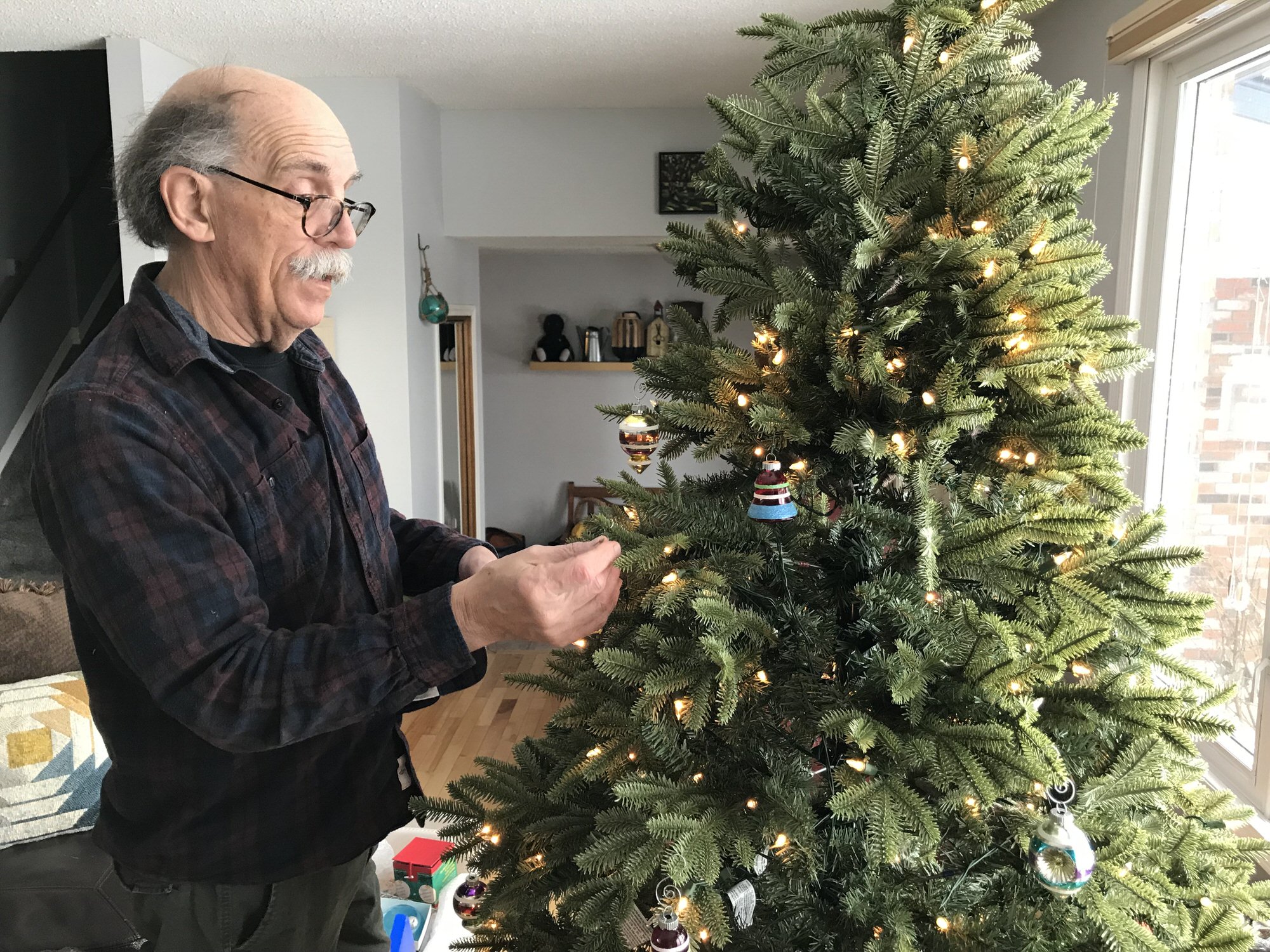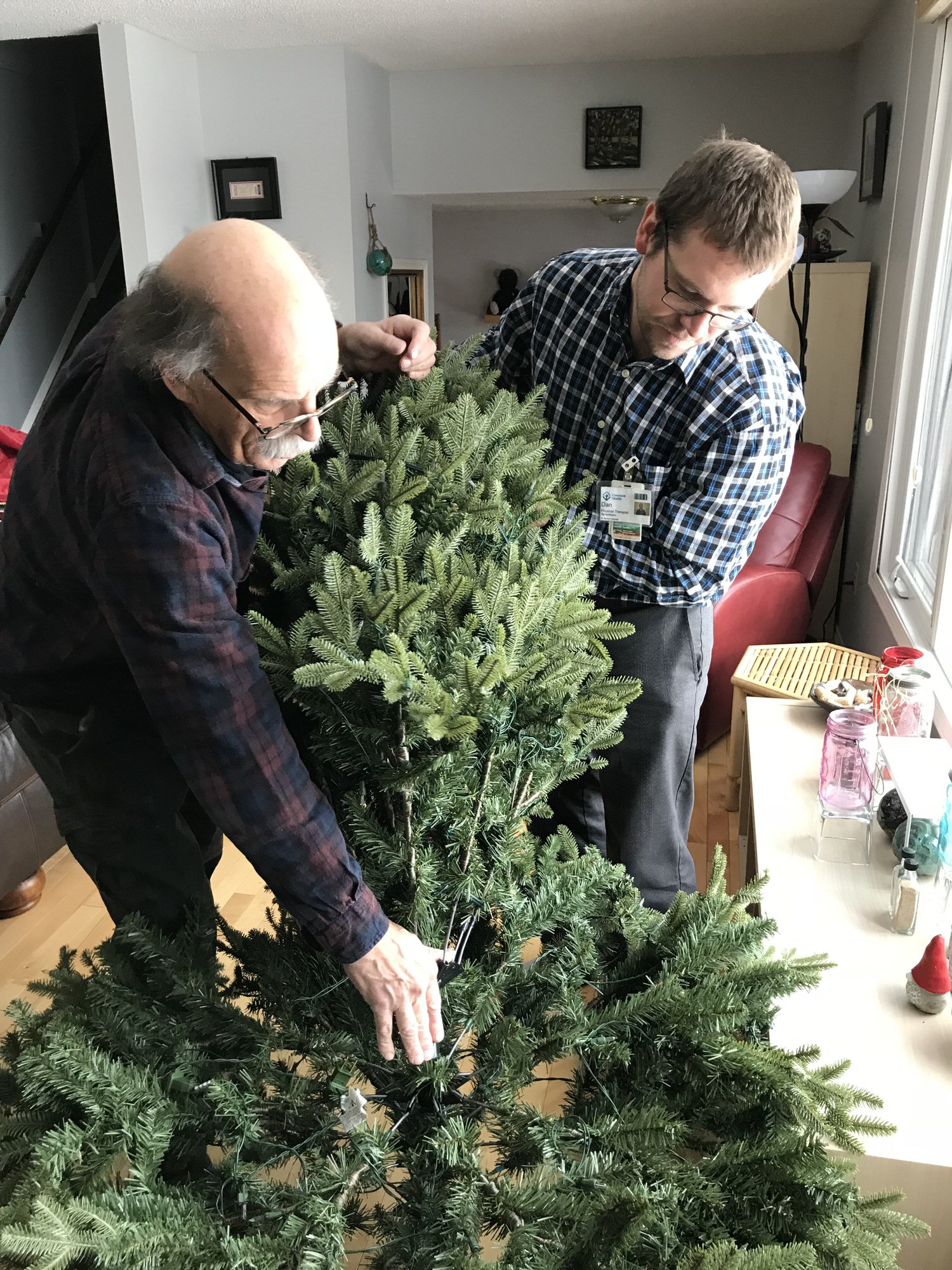Christmas decorating is part of stroke therapy
Clients in St. Mary’s Hospital stroke program set their own therapy goals
December 17, 2018
By Marguerite Watson, Senior Communications Advisor, Covenant Health
Doug Gregory is gladly tackling his Christmas to-do list this year.
“It feels really good to get back into a tradition like decorating a Christmas tree,” he says.

Doug, 65, had a stroke that affected the mobility in his left hand in September. He’s recovering through daily sessions with therapists from the Stroke Early Supported Discharge program at St. Mary’s Hospital in Camrose.
The Camrose Stroke Early Supported Discharge team is incorporating Christmas decorating into their work with Doug, which involves six to eight weeks of stroke rehabilitation in his home in Stettler. During the initial intake for the program, patients rate their satisfaction with their performance of tasks and set their own therapy goals. Depending on their needs, they can receive up to three hours of therapy daily.
One of Doug’s goals when he came into the program in November was to carry out his usual Christmas activities — cooking and baking, putting up a tree and decorating his home. He also wanted to volunteer with the Stettler Christmas Hamper, something he says he enjoyed doing before he retired from teaching at the local high school.
With a little help from the Camrose team, Doug is getting his Christmas wish. Working with Dan Gillespie, Physical Therapist, and Kristine Smith, Recreation Therapist, he was able to assemble his Christmas tree and decorate it with ornaments using his affected hand and arm.
“Another one of his goals [is] to be able to reach and pick things off the ground, so setting up the tree was working on that goal in a functional way . . . while doing something he enjoys . . . something meaningful,” says Dan.
Doug made the therapy session festive by playing Christmas music, reminiscing about past Christmases and telling stories about the decorations.
Some of Doug’s decorations are glass ornaments made in Japan in the 1940s, items that his father brought home from service in World War II. Putting these ornaments on the tree without dropping them challenged Doug to maintain his focus and balance, which also complemented his therapy.
“He was able to [decorate] fairly independently, just with a little bit of cueing to use his affected hand for stabilizing objects,” says Kristine.
In a session with a therapy assistant from the team, Doug successfully baked cookies to share with his wife.

Doug Gregory (left) gets help from Dan Gillespie, Physical Therapist, (right) to assemble his Christmas tree.
Doug’s tasks as a volunteer with the Christmas Hamper will be to fill and carry bags of gifts collected for recipient families. To get ready for his shift — on December 19 — he’ll practice with Kristine to make sure he can hold and fill the bags without any difficulties. Kristine will also accompany him on his shift to help him solve any problems he has with the tasks.
Working with the team from St. Mary’s has been “phenomenal,” Doug says. “I had a doctor’s appointment a week or so ago, . . . he hadn’t seen me since I’d been through rehab, and he was absolutely surprised at how far I’d come."
Now halfway through his therapy program, Doug will continue to work on improving his mobility as well as cooking and baking some of his favourite foods.